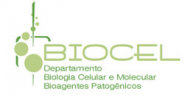JOURNAL BIOLOGIA CELULAR E MOLECULAR
Nuclear Lamin-A Scales with Tissue Stiffness and Enhances Matrix-Directed Differentiation
Apresentadores: Erika da Silva Czernisz e Gabriel Sarti Lopes
Tutor: Prof. Dr. José César Rosa
Abstract
Tissues can be soft like fat, which bears little stress, or stiff like bone, which sustains high stress, but whether there is a systematic relationship between tissue mechanics and differentiation is unknown. Here, proteomics analyses revealed that levels of the nucleoskeletal protein lamin-A scaled with tissue elasticity, E, as did levels of collagens in the extracellular matrix that determine E. Stem cell differentiation into fat on soft matrix was enhanced by low lamin-A levels, whereas differentiation into bone on stiff matrix was enhanced by high lamin-A levels. Matrix stiffness directly influenced lamin-A protein levels, and, although lamin-A transcription was regulated by the vitamin A/retinoic acid (RA) pathway with broad roles in development, nuclear entry of RA receptors was modulated by lamin-A protein. Tissue stiffness and stress thus increase lamin-A levels, which stabilize the nucleus while also contributing to lineage determination.
SEGUNDA FEIRA 25.05.2015 às 16:30 hs
Excepcionalmente no Salão Nobre – Prédio Central – FMRP
Artigo na íntegra: Aqui.
